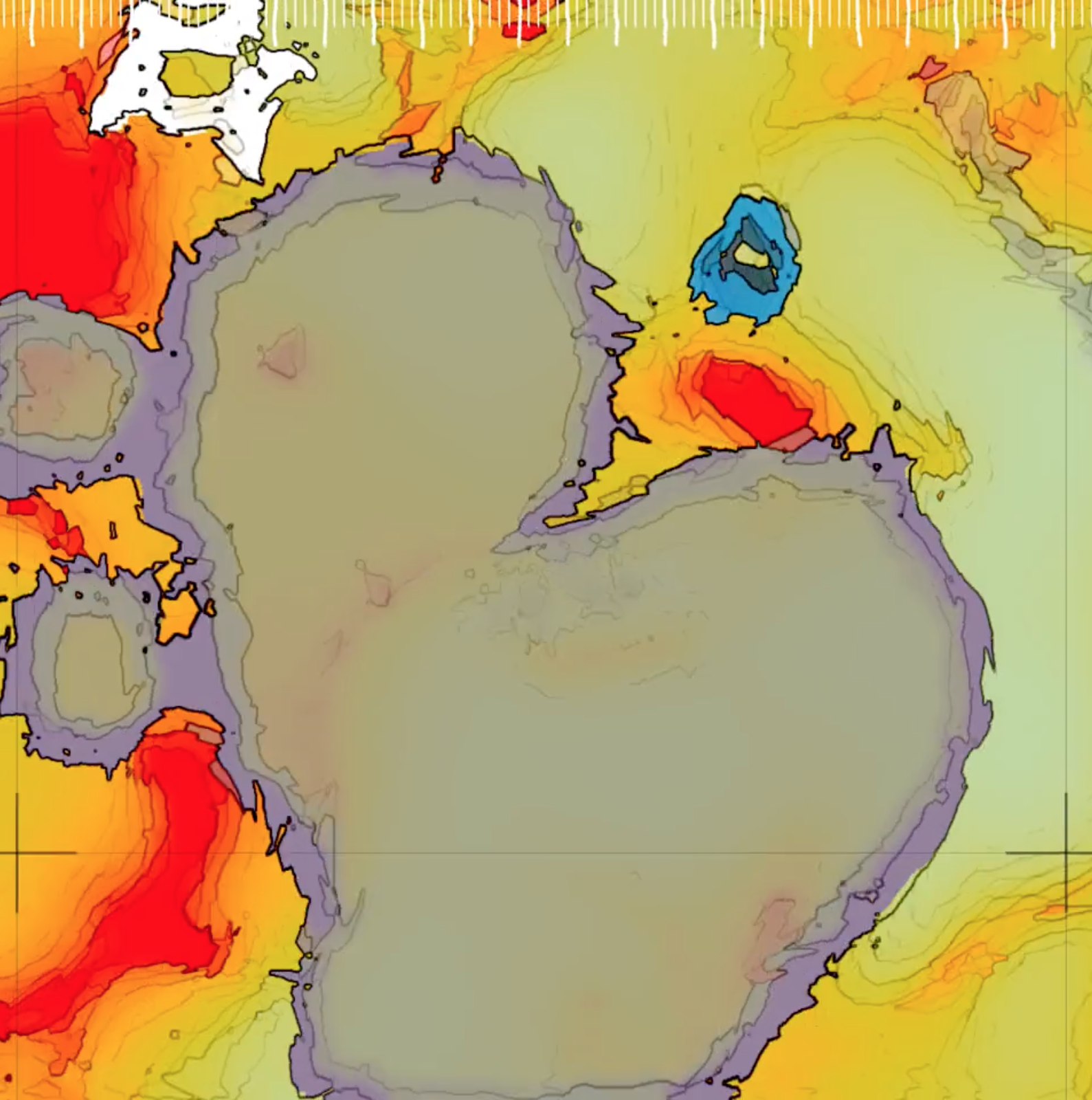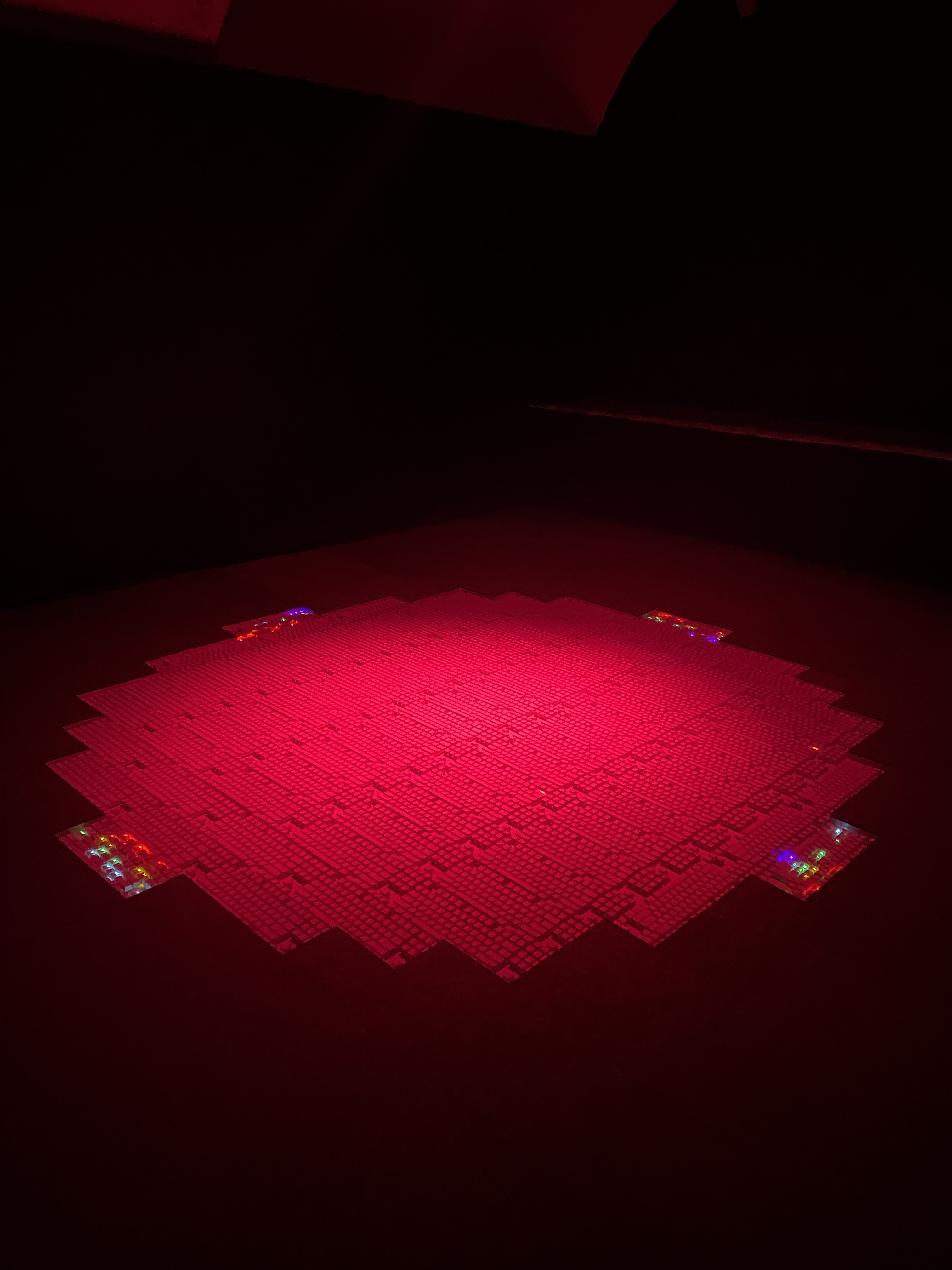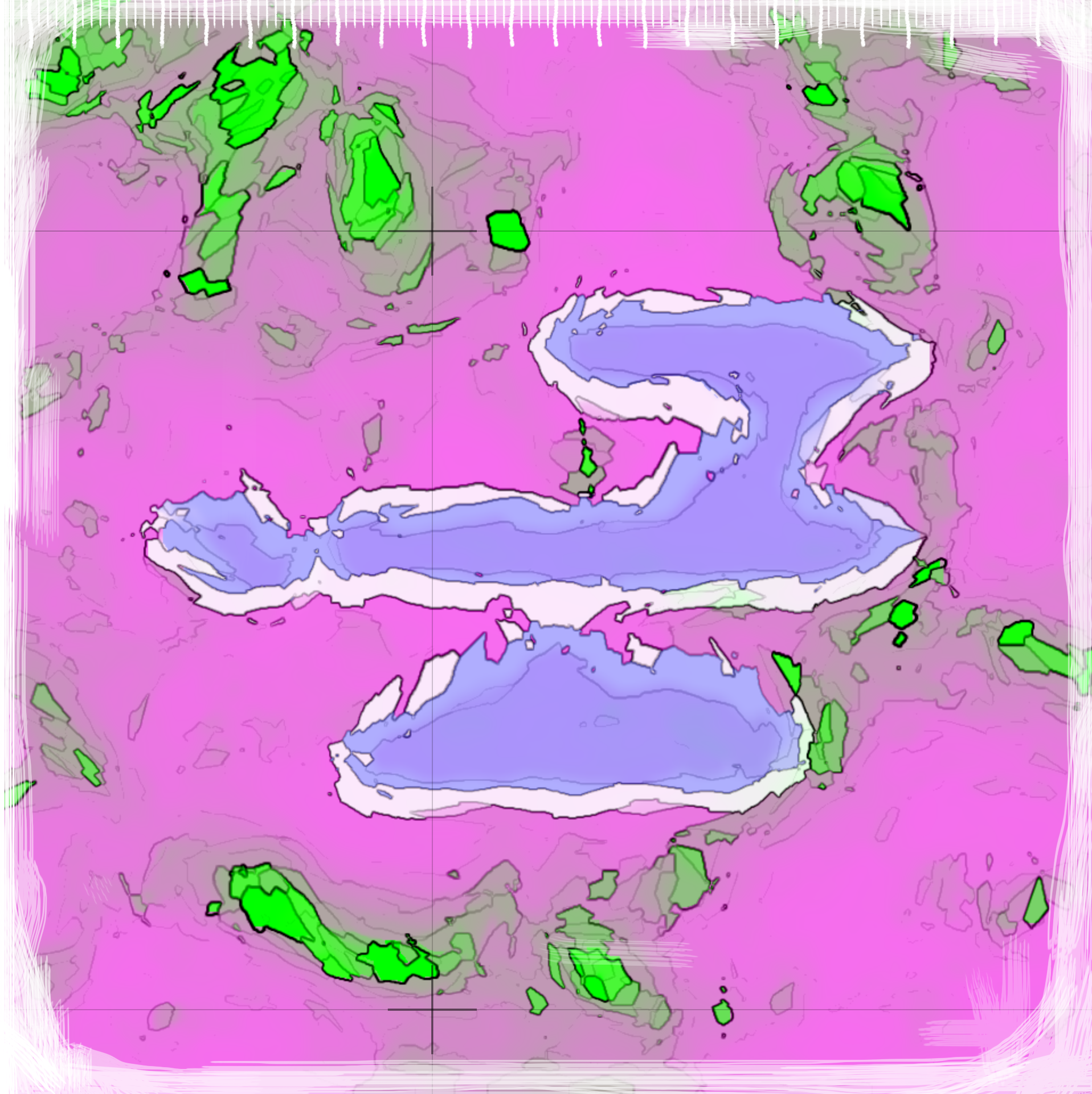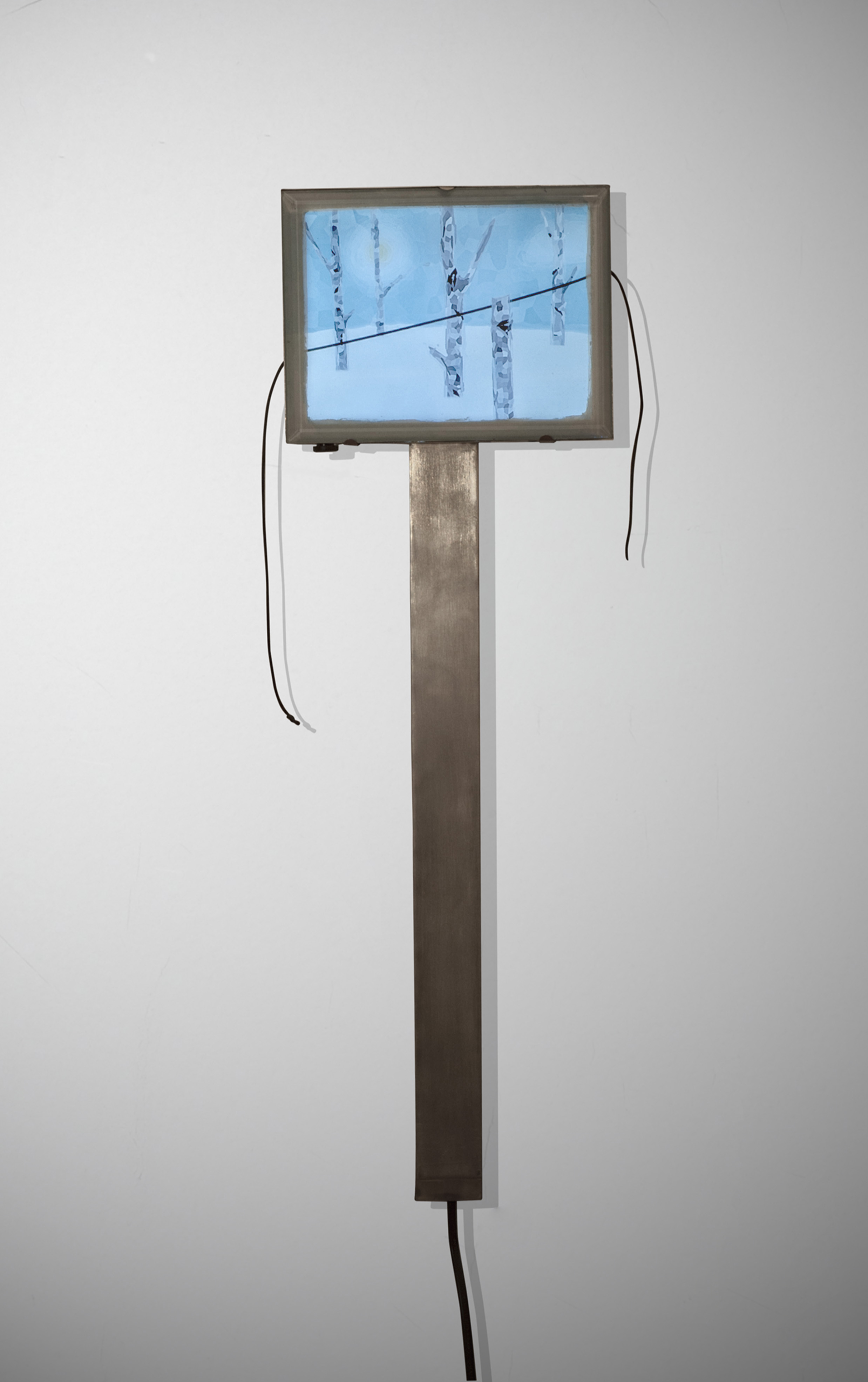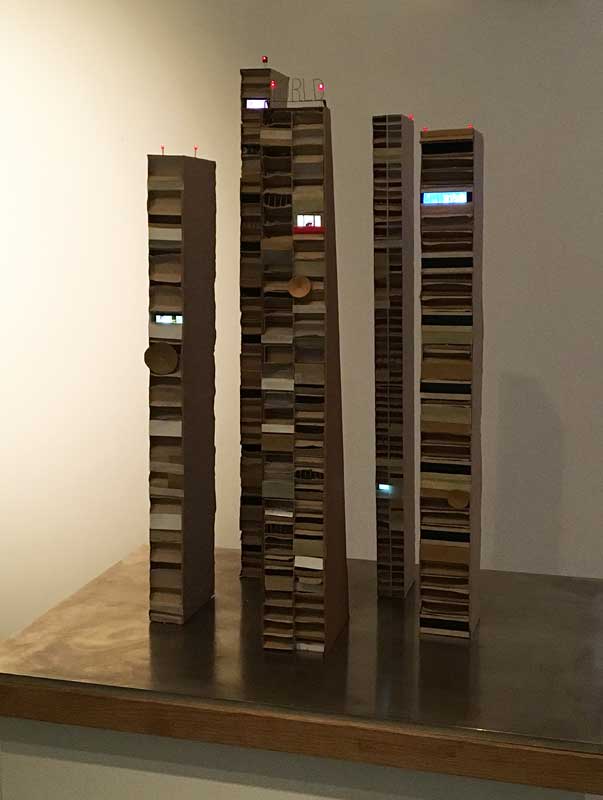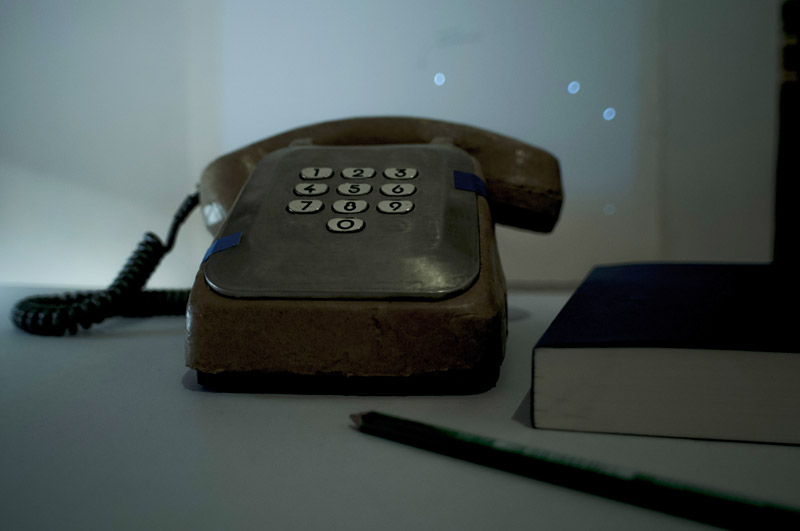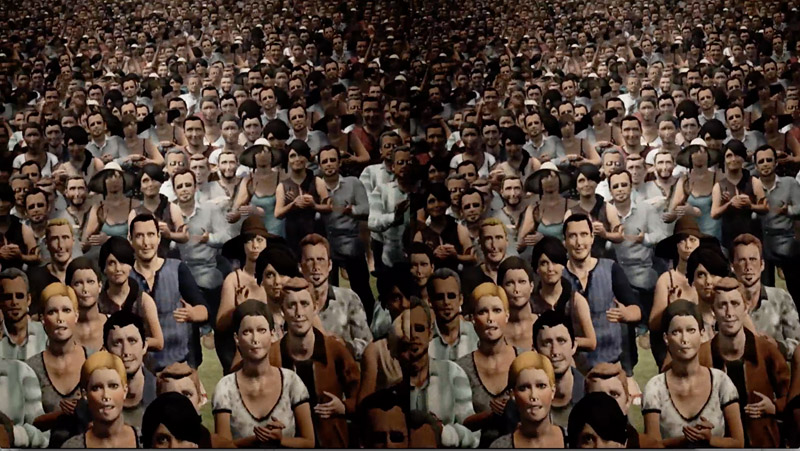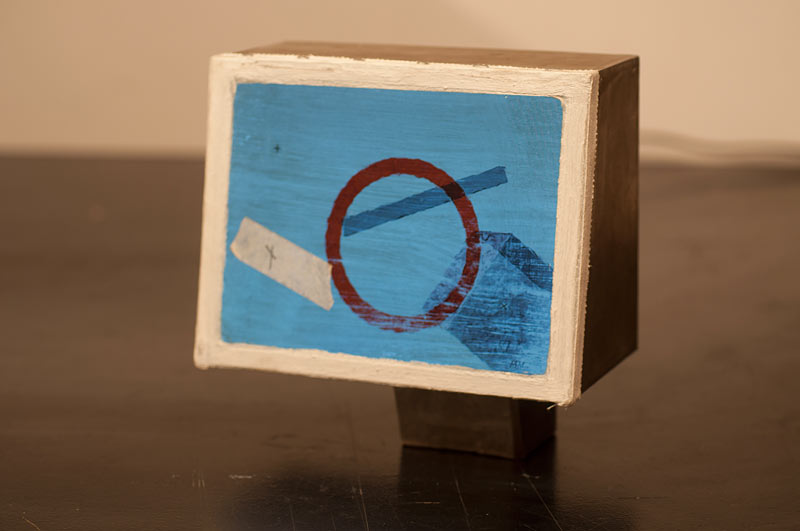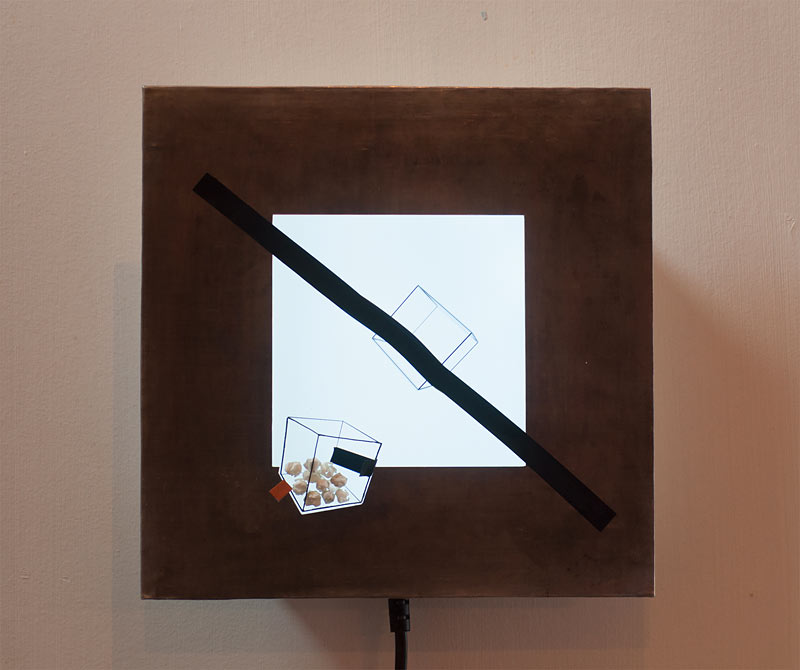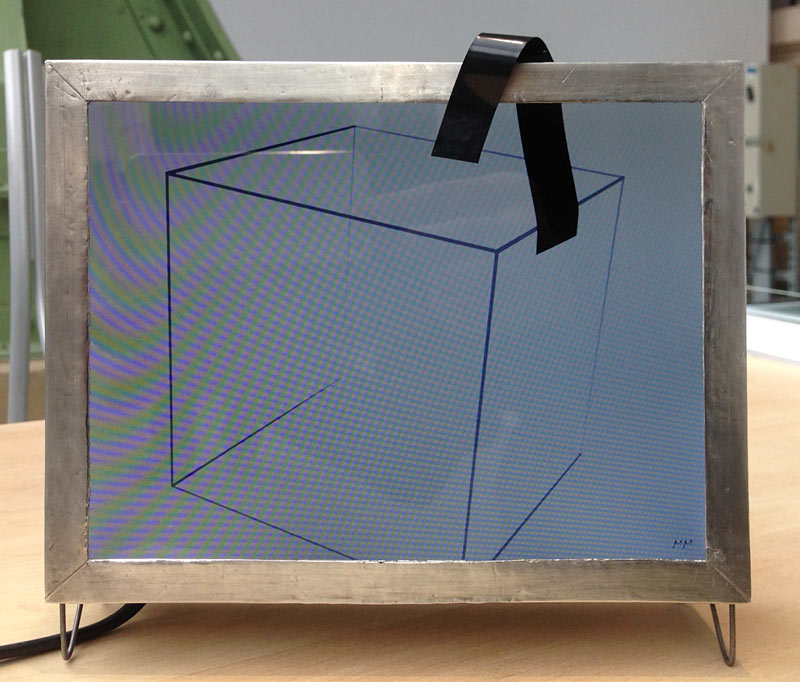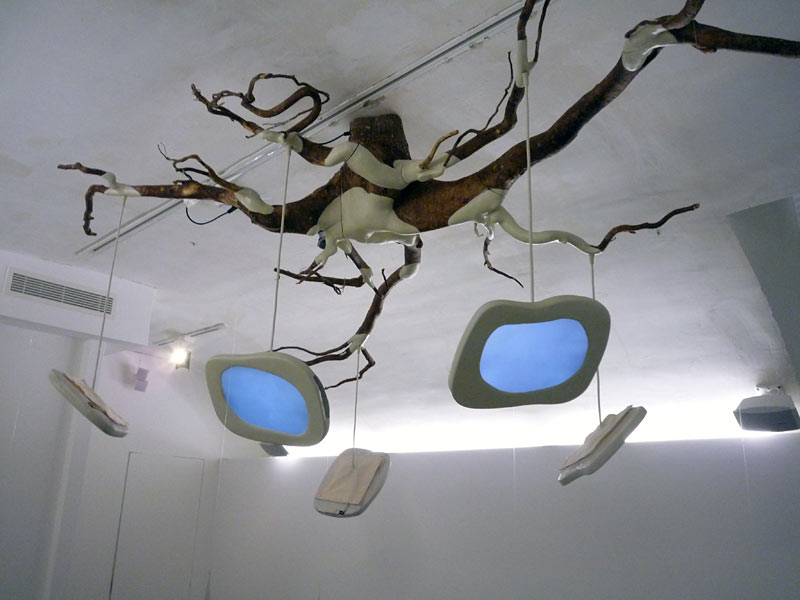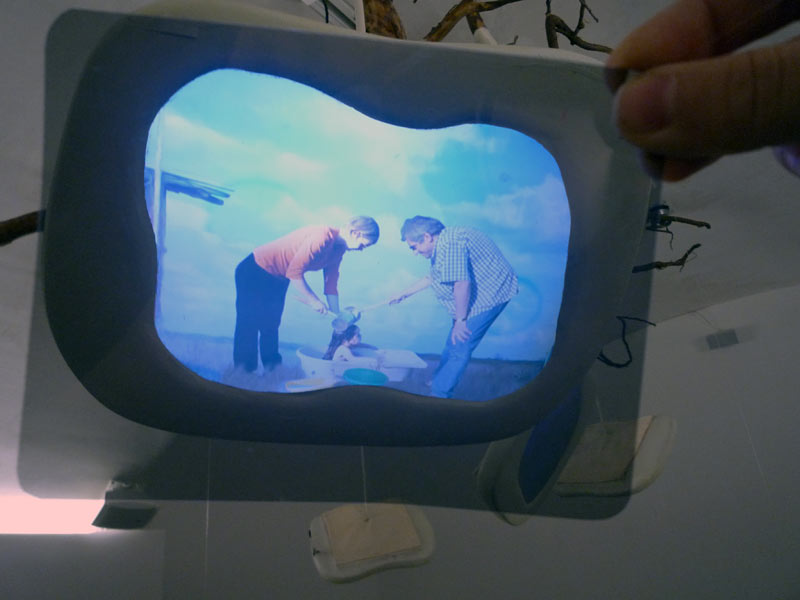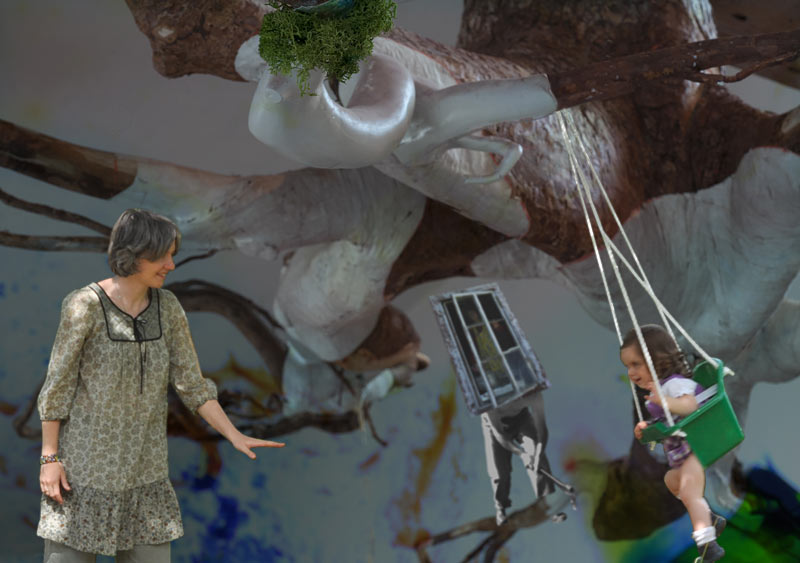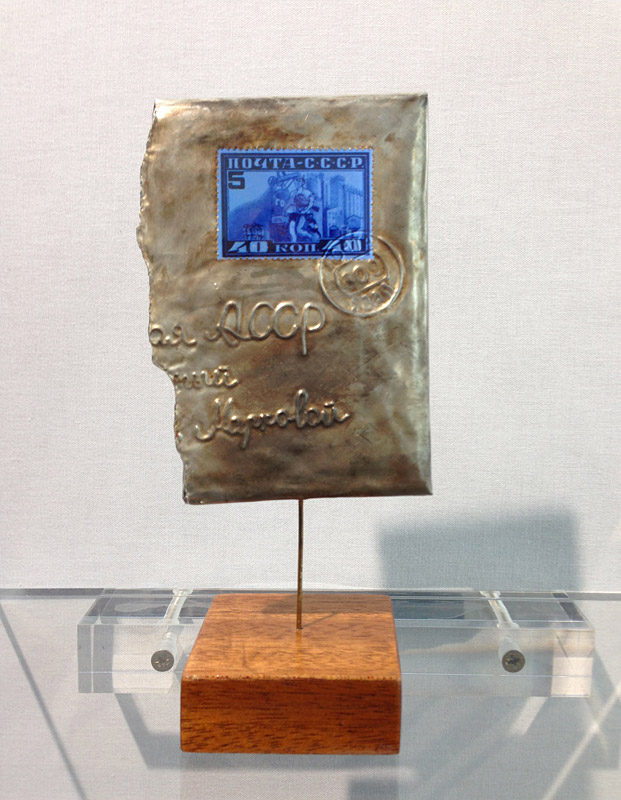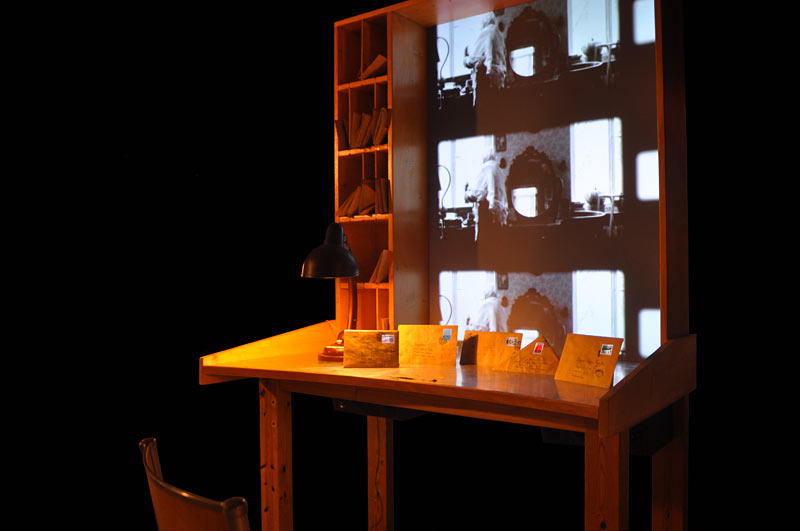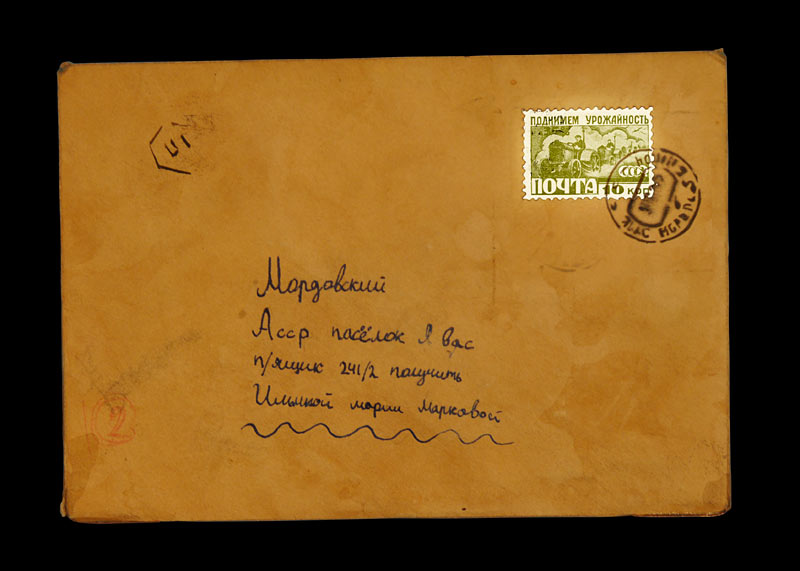Mikhail Margolis
After receiving his diploma in Moscow in 1991, Mikhail Margolis moved to the USA where he developed a strong interest in art, photography and computer sciences. Since moving to France in 2000 where he has continued to live, he studied animation and subsequently became involved in video art and interactive installations.
Mikhail Margolis retains from his studies of history at Soviet University a historical awareness and a taste for storytelling. Often inspired by Russian history, his work explores themes linked to contemporary society, depicts the deep relationship between humans and nature and questions form in the history of art.
In his work, he uses basic materials like paper, cardboard, tape, etc in an artisanal approach, combined with the most recent micro-technologies, from micro screens and computer to small electronic circuits. Both are so imbricated in the objet that they almost disappear, allowing the viewer to focus on the meaning of the artwork. The limits between the physical and the virtual elements of a piece are often blurred. In this way, Margolis establishes connections between the content of the artwork and the material used for its creation.
On a background woven like a linen canvas, colorful diving fins outline the background. Swim goggles arrive, leaving an undulating blue trail in their wake. Then an army of ping pong rackets plant themselves there like so many trees. And here a barbell weight that falls into the background, a rock. Water polo goals bounce around; the trajectory of their movement is in turn printed on the screen, tracing out towers. A red boxing glove enters, along with a pink mouth guard that weaves its way through the landscape. Tennis balls shimmer across the sky. And to finish, the protagonists leave one after the other before coming back again.
This playful construction-deconstruction of a scene populated by sports equipment symbolizes the ritual of competition. Like the seasons and their landscapes, the Olympic Games recur tirelessly every four years. Each one boasts of its exceptional character, its innovative construction, revolutionary transformations, and beneficial developments. The same events, the same medals, the same scandals.
In the same way, Mikhail Margolis endlessly generates "mini games", like a child would make sandcastles. Ephemeral compositions in bright colors like those of toys are, anecdotes replacing one another in constant enthusiasm. Replay reminds us that the Olympic Games are games, and should remain so.
Exhibitions
Past- + Misha Margolis - July '11
- + Mikhail Margolis The root - January '13
- + Mixed Media - July '13
- + Show Off - The media art fair - October '13
- + Art Paris Art Fair - March '15
- + Mikhail Margolis Glory - December '16
- + Art Paris Art Fair 2017 - March '17
- + Opening Galerie Charlot Tel Aviv: The Artside of Algorithms - August '17
- + Galerie Charlot 10-Year Anniversary Exhibition - September '20
- + Art Me! - June '22
- + Here we are - February '23
- + Projections. Architectures olympiques - July '24
News
- + 09/09/2020 | Galerie Charlot @ Ars Electronica - In Kepler Gardens
- + 12/14/2016 | Thomas Israël, Jacques Perconte, Mikhail Margolis, Antoine Schmitt & Zaven Paré @ Auction by Christie's & Fondation Meeschaert
- + 03/25/2015 | Galerie Charlot @ Art Paris Art Fair
- + 06/17/2014 | Galerie Charlot @ Scope Basel
Editions
- + Projections. Architectures olympiques
2024 - Galerie Charlot Èdition
Press
- + 05/02/2022 | EXPOSITION ART ME !
by Dominique Moulon, TK-21
> https://www.tk-21.com/Exposition-Art-Me - + 05/27/2017 | The Artside of Algorithms Exhibition Opening
Secret Tel Aviv
> https://www.secrettelaviv.com/tickets/th...
_ the-artside-of-algor...pdf ( PDF, 369.03 KB ) - + 05/26/2017 | 'The Artside of Algorithms' at Gallery Charlot, Tel Aviv
Blouin ArtInfo
> enme.blouinartinfo.com/news/story...
_ the-artside-of-algor...pdf ( PDF, 245.28 KB ) - + 12/10/2016 | Margolis at Charlot's, 2016-17
by Pierre Berger, Diccan
> diccan.com/Blog2/Margolis_Charlot...
_ margolis-at-charlots...pdf ( PDF, 173.64 KB ) - + 03/27/2015 | Fresh twigs and deep roots at the Grand Palais
by Pierre Berger, Diccan
> diccan.com/Blog/2015_Art_Paris.ht...
_ fresh-twigs-and-deep...pdf ( PDF, 1.58 MB ) - + 08/01/2014 | Mikhail Margolis : correspondance du goulag
by François Boutard , Art Design Tendance
> https://artdesigntendance.com/cartes-pos... - + 04/02/2014 | Szalonok hétvégéje Párizsban II
by Júlia Cserba, Artportal.hu
> artportal.hu/magazin/nemzetkozi/s...
_ szalonok-hetvegeje-p...pdf ( PDF, 359.75 KB ) - + 03/31/2014 | Galerie Charlot, ArtParis ArtFair 2014, secteur Promesses
by Ouvretesyeux TV, Vimeo
> https://vimeo.com/90358067 - + 03/29/2014 | Tante immagini da Art Paris
by Massimo Mattioli, http://www.artribune.com/
> www.artribune.com/2014/03/tante-i...
_ tante-immagini-da-ar...pdf ( PDF, 506.95 KB ) - + 03/28/2014 | Art Spring in Paris: digital art on stage
by Pierre Berger, Digitalarti
> www.digitalarti.com/blog/digitala...
_ art-spring-in-paris-...pdf ( PDF, 588.19 KB ) - + 03/28/2014 | Art Paris, notre sélection
by Alice Morin, AD Magazine
> www.admagazine.fr/art/news/diapor...
_ art-paris-notre-sele...pdf ( PDF, 1.17 MB ) - + 03/23/2014 | Foire d'Art Contemporain: ART PARIS ART FAIR 2014
by Eric Simon, actuart.org
> www.actuart.org/2014/03/foire-d-a...
_ foire-dart-contempor...pdf ( PDF, 1002.07 KB ) - + 11/25/2013 | LA FIAC ! Ou le marché de l'art à l'ère numérique
by Veronique Gode, Digitalarti
> www.digitalarti.com/fr/blog/digit...
_ la-fiac--ou-le-march...pdf ( PDF, 804.35 KB ) - + 11/13/2013 | La présence des arts numériques s'accentue sur le marché de l'Art contemporain
by Digitalarti, Digitalarti
> www.digitalarti.com/fr/blog/digit...
_ la-presence-des-arts...pdf ( PDF, 1.39 MB ) - + 10/22/2013 | Show Off
by Exponaute, Exponaute
_ show-off-galeriechar...jpg ( JPG, 43.65 KB ) - + 10/22/2013 | Show Off - L'art numérique sur le devant de la scène
by Laura Heurtelop, Arts Magazine
_ show-off-lart-numeri...jpg ( JPG, 79.37 KB ) - + 06/11/2013 | Spring wind and good surprises in Basel
by Pierre Berger , Diccan
> diccan.com/Blog/Scope_Basel_2013_...
_ spring-wind-and-good...pdf ( PDF, 188.69 KB ) - + 01/14/2013 | Misha Margolis and Dominique Albertelli @ Charlot Gallery review
by Betty, Aqnb
> www.aqnb.com/2013/01/13/misha-mar...
_ misha-margolis-and-d...pdf ( PDF, 246.4 KB )
Press Release & Details
Russian Voodoo
byCardboard, tin, screen, electronics, video, thread
Interactive work
5 + 1 AP
18 x 60 x 11 cm
2017
City sight
byInstallation vidéo
Wood, Cardboard, Tin, LCD mini screens, Arduino, color tape
Unique piece
78x68x49 cm
2016
Center of the Universe
byInteractive installation
Cardboard, Vintage phone, Paperboard, pico projector, Rasberry computer, Star Registry
Unique piece
Variable dimensions
2016
Glory
byVirtual Reality installation
Paperboard mask, Virtual Reality goggles, Computer, Custom Software
Pièce unique
125x 101x101 cm
2016
100 Pieces of Contemporary Art
byVideo Work
Modified LCD panel, video, mediaplayer
5 copies + 1 AP
19 x 19 x 10 cm
2015
Final Journey
byInteractive Video Work
LCD panel, raspberryPI, TouchSensor
5 copies + 1 AP
24 x 24 x 8 cm
2015
The root - interactive installation
byVideo installation. Tree root, screens, filters
Unique piece
2012
The root - interactive installation
byInteractive installation. Tree root, screens, filters
Unique piece
2012


